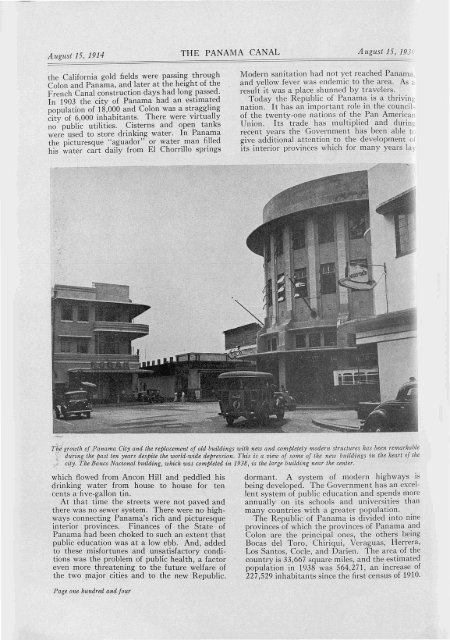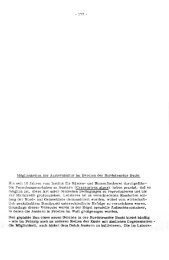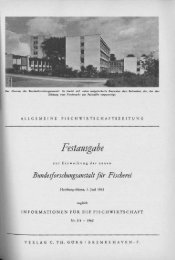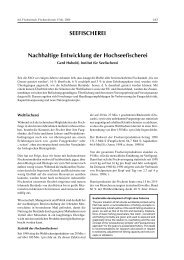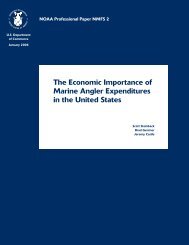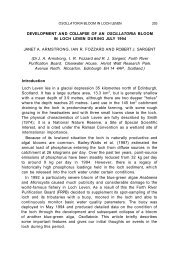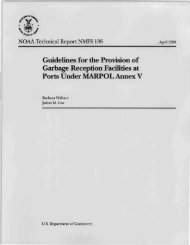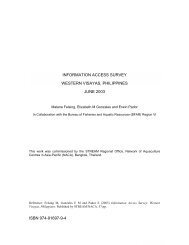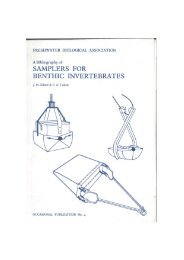Download (36Mb) - Aquatic Commons
Download (36Mb) - Aquatic Commons
Download (36Mb) - Aquatic Commons
You also want an ePaper? Increase the reach of your titles
YUMPU automatically turns print PDFs into web optimized ePapers that Google loves.
August 15, 1914 THE PANAMA CANAL August 15,1931<br />
the California gold fields were passing through<br />
Colon and Panama, and later at the height of the<br />
French Canal construction days had long passed.<br />
In 1903 the city of Panama had an estimated<br />
population of .18,009 and Colon was a str:=tggling<br />
city of 6,000 lllhabitants. There were vIrtually<br />
no public utilities. Cisterns and open tanks<br />
were used to stote drinking water. In Panama<br />
the picturesque "aguador" or water man filled<br />
his water cart daily from El Chorrillo springs<br />
Modern sanitation had not yet reached Panama<br />
and yellow fever was endemic to the area. As CJ<br />
result it was a place shunned by travelers.<br />
Today the Republic of Panama is a thriving<br />
nation. It has an 'important role in the councils<br />
of the twenty-one nations of the Pan American<br />
Union. Its trade has multiplied and during<br />
recent years the Government has been able t<br />
give additional attention to the development 01<br />
its interior provinces which for many years la}<br />
T!~·gro.wtjL oj panama City and the replacement oj old buildings with new and completely modern structures has been remarkable<br />
~ duri1ig·tlie past ten years despite the world-wide depression. This is a view oj some oj the new buildings in the heart oj the<br />
~! city. rhe Banco Nacional building, which was completed in 1938, is the large building near the center.<br />
which flowed from Ancon Hill and peddled his<br />
drinking water from house to house for ten<br />
cents a' five-gallon tin.<br />
At that time the streets were not paved and<br />
there was no sewer system. There were no highways<br />
connecting Panama's rich and picturesque<br />
interior provinces. Finances of the State of<br />
Panama had been choked to such an extent that<br />
public education was at a low ebb. And, added<br />
to these misfortunes and unsatisfactory conditions<br />
was the problem of public health, a factor<br />
eve!1 !ll0re threatening to the future welfare of<br />
the two ~ajor cities and to the new Republic.<br />
Page. one hun4r~d and jour<br />
dormant. A system of modern highways is<br />
being developed. The Government has an excellent<br />
system of public education and spends more<br />
annually on its schools and universities than<br />
many countries with a greater population.<br />
The Republic of Panama is divided into nine<br />
provinces of which the provinces of Panama and<br />
Colon are the principal ones, the others being<br />
Bocas del Toro, Chiriqui, Veraguas, Herrera,<br />
Los Santos, Coc\e, and Darien. The area of the<br />
country is 33,667 square miles, and the estimated<br />
population in 1938 was 564,271, an increase of<br />
227,529 inhabitants since the first census of 1910.


